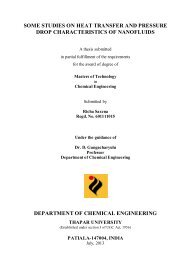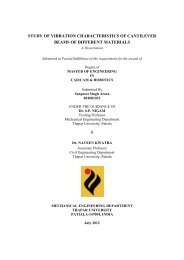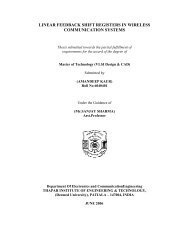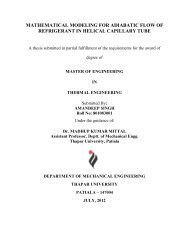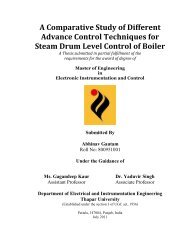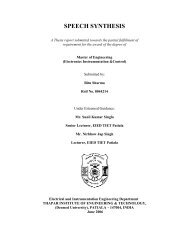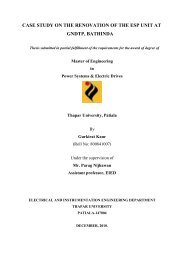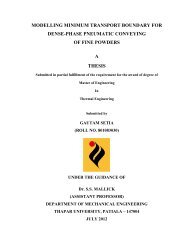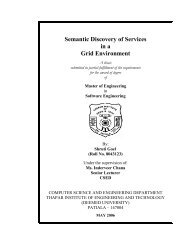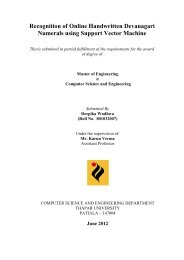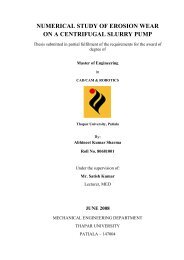from indigenous fermented foods and human gut ... - Thapar University
from indigenous fermented foods and human gut ... - Thapar University
from indigenous fermented foods and human gut ... - Thapar University
You also want an ePaper? Increase the reach of your titles
YUMPU automatically turns print PDFs into web optimized ePapers that Google loves.
64<br />
Chapter III Material <strong>and</strong> methods<br />
Approximately 10 9 CFU/ml bacterial culture was suspended in one ml DMEM medium<br />
(without serum <strong>and</strong> antibiotics) <strong>and</strong> added to different wells. The plate was incubated at 37°C<br />
for 2 h in the presence of 5% CO2 in incubator. The monolayer was washed with sterile PBS<br />
<strong>and</strong> the cells were detached by trypsinization. one ml of 0.25% Trypsin-EDTA solution<br />
(Sigma. USA) was added to each well of six-well plate which was then incubated for 15 min<br />
at room temperature. The cell suspension was platted on MRS agar by serial dilution for<br />
determining the adherent bacterial cells. The plate was incubated for 24-48 h at 37°C <strong>and</strong><br />
colonies were counted. Bacterial cells initially added to each well of six-well plates were also<br />
counted by serial dilution <strong>and</strong> plating on MRS agar. The results of the adhesion assay were<br />
expressed as adhesion percentage, the ratio between adherent bacteria <strong>and</strong> added bacteria per<br />
well. Three independent experiments (n = 3) with two replicates in each experiment with<br />
Caco2 cells of same passage were carried out.<br />
3.9 Screening of Lactobacillus spp. for Bacteriocin Production<br />
Cell-free supernatants (CFS) of Lactobacillus were obtained by centrifuging the<br />
cultures at 12000 x g for 10 min, collecting the supernatants, which were adjusted to pH 6.5<br />
with 1 M NaOH, <strong>and</strong> filtered through a 0.22 μm filter (Millipore). Inhibitory activity <strong>from</strong><br />
hydrogen peroxide was avoided by the addition of catalase (5 mg/ml). Bacteriocin production<br />
activity was determined using the well diffusion method (Motta <strong>and</strong> Br<strong>and</strong>elli, 2002) by<br />
using Aeromonas hydrophila ATCC 7966, Yersinia enterolitica MTCC 840, Staphylococcus<br />
aureus ATCC 9144, Enterobacter (Chronobacter) sakazakii MTCC 659, Shigella flexneri 2a<br />
<strong>and</strong> Listeria monocytogenes ATCC 19111 as the indicator bacteria. Aliquots (20 µl) of<br />
culture supernatants were applied to well (5 mm in diameter) on agar plates previously<br />
inoculated with a cell suspension of indicator bacteria, which corresponded to a 0.5<br />
McFarl<strong>and</strong> turbidity st<strong>and</strong>ard solution.



